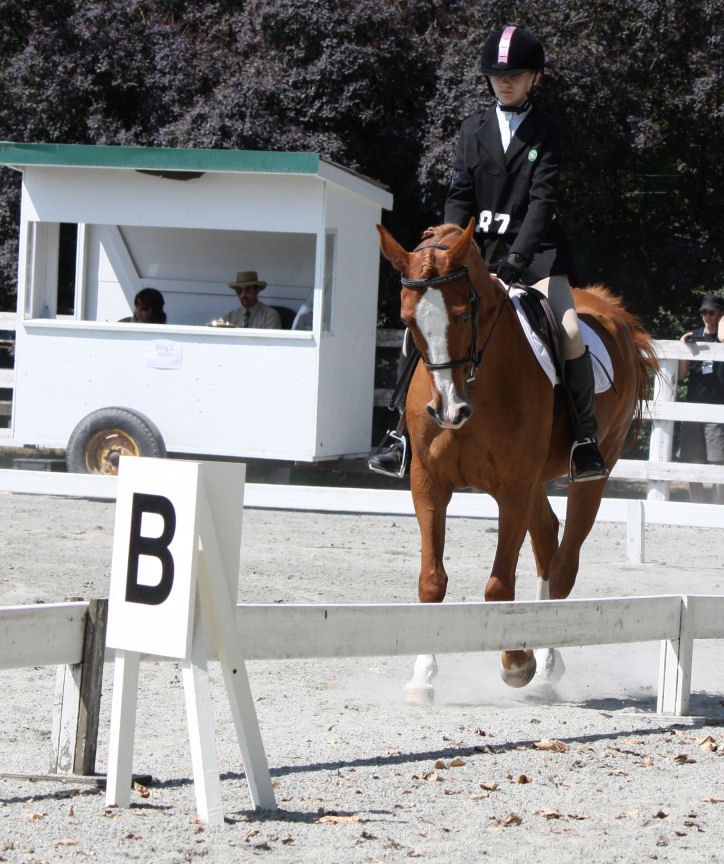Riding Level 2: Progressive Transitions
Those who have been in Cavaliere Classes and riding lessons in the last week or so will have noticed we've spent quite a bit of time working on transitions, from halt to walk, walk to trot, trot to walk, etc. Transitions that go from one pace to the next one down or up are called progressive, and these are the only type of transition you'll be asked to show in Level 2:
9. Progressive transitions (halt, walk, trot)
At higher levels you will begin to work on trot to halt, walk to canter, and other transitions that seem to skip a pace. But before you get there, you want to perfect your ability to make smooth progressive transitions.
By now you should be well-acquainted with aids for halt, walk and trot, but review this level one primer to remind yourself of their sequence.
Accuracy

Accuracy is important. When you are asked to halt beside the letter 'A' , for example, that letter should be somewhere between your horse's shoulder and your knee. While this may seem a trivial distinction when you are first learning to ride, think how important measure is when swordfighting. If you aren't able to precisely determine where your horse will stop, turn, or change pace, you will never be able to judge your measure and time your blows effectively.
Balance
In order to achieve accuracy, your horse must be in balance. In other words, his hind end must be engaged so that he can take more weight on the back legs, while his forehand remains light and responsive. If your horse is strung out, and just letting his hind legs trail behind him, his downward transitions will be rough, his upward ones will be sluggish, and both will be late.
The Half Halt
The half halt is the key to balancing your horse. I like to think of it like a clutch in a manual transmission car. You need to use the clutch regardless of whether you're going up or down a gear. As you still your seat, hold with the outside rein and squeeze and release with the inside rein you are not only alerting the horse that a change is coming, you are encouraging him to balance and soften in anticipation.
Timing
How long before a transition should you perform a half halt? That depends on the pace, and to a large extent on the horse. Sensitive horses can respond to a half-halt very quickly, while others may require several strides of half-halt before they're ready to change gaits.
In our arena at Red Colt there are convenient fenceposts set 10 feet apart. As a rule of thumb if you are travelling at the walk, give your half-halt at the fencepost before the letter to get a nice square halt, or prompt trot transition on the letter. If you are travelling at the trot, you may need to begin your half-halts two fenceposts, or 20 feet, away. Of course the speed and responisiveness of your horse will factor into this, and you will need to experiment to see what your window is.
For a more complete look at the importance of balance, engagement and the half-halt in transitions I highly recommend this page at classicaldressage.net: http://www.classicaldressage.net/members/lesson_pages/transitions.html
Next week: Circles & Half-circles
